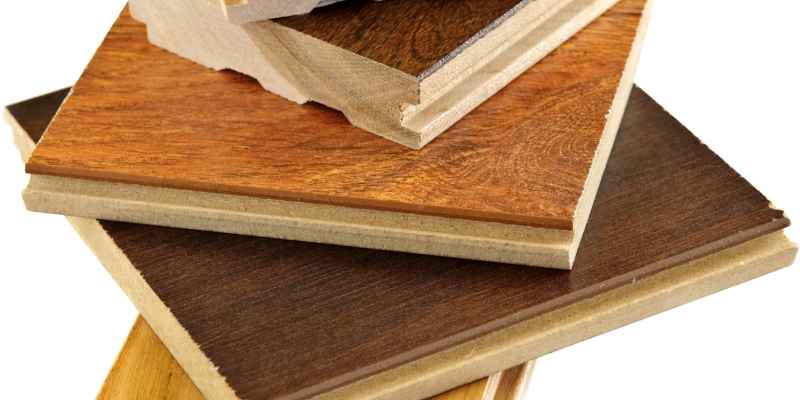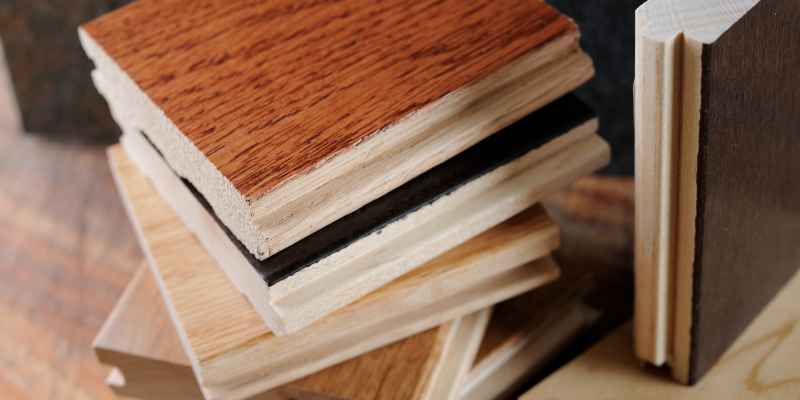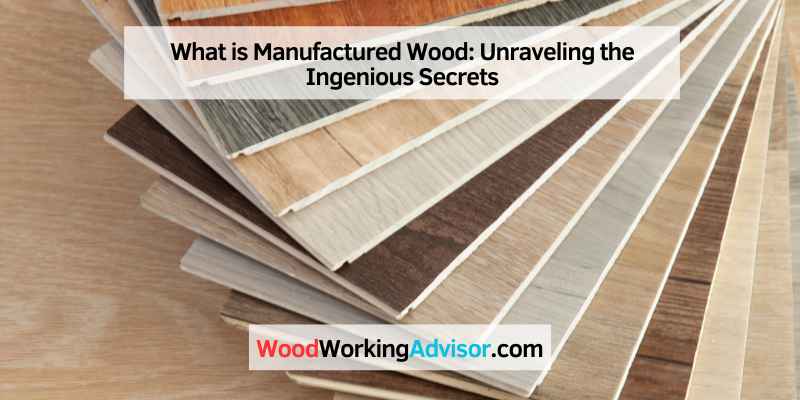Manufactured wood refers to a composite building material made by binding together various wood particles or fibers using adhesives and heat. It is a versatile and cost-effective alternative to solid wood, offering a wide range of applications in construction and furniture manufacturing.
With increasing environmental concerns, the popularity of manufactured wood has risen due to its sustainable and resource-efficient nature. This type of wood can be customized to meet specific requirements, providing consistent quality and dimensional stability. Additionally, manufactured wood often exhibits improved resistance to moisture, warping, and pests compared to traditional solid wood.
It is an excellent option for those seeking durable and sustainable building materials.
The Basics Of Manufactured Wood
Manufactured wood, also known as engineered wood, is a cost-effective and eco-friendly alternative to solid wood. It is made by binding together layers or particles of wood using adhesives or other methods. This process enhances the structural integrity of the wood while reducing its natural variability.
What Is Manufactured Wood?
Manufactured wood is a type of wood product that is created by combining smaller pieces or layers of wood to form a larger composite material. Unlike solid wood, which is cut directly from a tree trunk, manufactured wood is engineered to have specific qualities, making it suitable for a variety of applications.
Types Of Manufactured Wood
There are several types of manufactured wood, each with its own unique composition and characteristics. The most common types are:
| Type | Composition | Characteristics |
|---|---|---|
| Plywood | Multiple veneer layers bonded together with adhesives. | Durable, strong, and resistant to warping. |
| Particleboard | Compressed wood particles bonded with resins. | Smooth surface, lightweight, and affordable. |
| MDF (Medium Density Fiberboard) | Wood fibers combined with resin under pressure. | Smooth surface, stable, and suitable for painting. |
- Fiberboard: Compressed wood fibers and resin for enhanced strength.
- OSB (Oriented Strand Board): Thin wood strands layered perpendicularly and bonded together.
- Laminated Veneer Lumber (LVL): Thin layers of wood veneer glued together to create strong structures.
These types of manufactured wood offer various benefits such as increased stability, resistance to moisture and pests, and reduced environmental impact. They are widely used in construction, furniture production, and interior design.

Advantages Of Using Manufactured Wood
Manufactured wood, also known as engineered wood, is a versatile and cost-effective alternative to traditional solid wood. It is made from a combination of real wood fibers and synthetic materials, resulting in a product that offers several advantages over its natural counterpart. Let’s dive into the key advantages of using manufactured wood:
Strength And Durability
Manufactured wood is engineered to be incredibly strong and durable. Its unique composition, which includes layers of wood fibers, allows it to withstand heavy loads and resist warping, cracking, and splitting. Unlike solid wood, which can be susceptible to these issues, manufactured wood provides long-lasting stability and strength.
Cost-effectiveness
One of the biggest advantages of manufactured wood is its affordability. Compared to solid wood, which can be expensive due to its limited availability and high demand, manufactured wood offers a cost-effective solution. The manufacturing process allows for efficient use of materials, reducing waste and lowering production costs. This makes it a more budget-friendly option for both residential and commercial applications.
Sustainability
With the increasing focus on environmentally friendly practices, manufactured wood stands out as a sustainable choice. It is made from fast-growing trees and recycled wood fibers, reducing the need for harvesting mature trees. This helps to preserve forests and minimize deforestation. Additionally, the manufacturing process consumes less energy and produces fewer emissions compared to the production of solid wood, further reducing its environmental impact.
In conclusion, manufactured wood offers numerous advantages over solid wood, including its strength and durability, cost-effectiveness, and sustainability. These benefits make it an attractive option for a wide range of applications in the construction and furniture industries.
Applications Of Manufactured Wood
Manufactured wood, also known as engineered wood, has a wide range of applications due to its versatility and durability. It is a popular choice in various industries such as furniture making, construction, and architecture. Let’s explore how manufactured wood is used in each of these areas:
Furniture Making
Manufactured wood is extensively used in the furniture making industry. Its affordability, strength, and ability to mimic the appearance of natural wood make it a preferred choice for both residential and commercial furniture.
Here are some key applications of manufactured wood in furniture making:
- Cabinets and Shelves: Manufactured wood is often used to create durable and stylish cabinets and shelves. Its dimensional stability prevents warping or cracking, ensuring the longevity of these furniture pieces.
- Tables and Desks: The versatility of manufactured wood allows for the creation of various table designs. From elegant dining tables to functional office desks, this material provides the necessary strength and stability.
- Bed Frames and Headboards: Manufactured wood is an excellent choice for bed frames and headboards. Its structural integrity provides the necessary support for mattresses and ensures durability.
Construction And Architecture
The use of manufactured wood has significantly increased in the construction and architecture industry over the years. It offers an eco-friendly alternative to traditional solid wood, while maintaining strength and stability. Here are some applications of manufactured wood in this field:
- Structural Elements: Manufactured wood is used for structural elements such as beams, columns, and trusses. Its engineered composition provides strength and load-bearing capabilities, making it suitable for constructing buildings and bridges.
- Flooring: Manufactured wood flooring is a popular choice in both residential and commercial buildings. It combines the aesthetic appeal of natural wood with enhanced durability and resistance to moisture and temperature changes.
- Doors and Windows: Manufactured wood is utilized in the production of doors and windows. Its dimensional stability prevents warping or shrinking, ensuring proper fitting and functionality.
Common Misconceptions About Manufactured Wood
Manufactured wood, also known as engineered wood, is often misunderstood and overlooked due to some common misconceptions. However, it is important to dispel these myths and gain a better understanding of the true qualities and benefits that manufactured wood brings to various applications. Let’s explore some of the most commonly misunderstood aspects below.
Quality And Appearance
Many people believe that manufactured wood is of lower quality compared to solid wood. However, this is far from the truth. In fact, manufactured wood often offers enhanced durability and stability due to its construction. By using layers of wood veneers or fibers bonded together with adhesives, it creates a stronger and more uniform material.
Additionally, manufactured wood can be customized in terms of appearance, offering a wide range of finishes and designs. Whether you prefer a rustic oak or a sleek modern look, there are various options available to suit your aesthetic preferences. With advancements in manufacturing techniques, the appearance of manufactured wood can closely resemble solid wood, deceiving even the most discerning eye.
Environmental Concerns
Concerns about deforestation and the impact on the environment are often associated with using wood products. However, manufactured wood presents a sustainable alternative. Unlike solid wood, which requires cutting down whole trees, manufactured wood is made by utilizing smaller and fast-growing trees, reducing the overall demand for precious resources.
Moreover, the manufacturing process of engineered wood minimizes waste, as leftover wood fibers and remnants from other wood products can be effectively repurposed and compressed to create new boards. This reduces the need for additional raw materials and promotes a more eco-friendly approach to furniture and construction materials.
Future Innovations In Manufactured Wood
Manufactured wood, also known as engineered wood, is continuously evolving to meet the ever-changing needs of the construction and furniture industries. With the increasing demand for sustainable materials and the desire to improve the performance and strength of wood products, the future of manufactured wood looks promising. Future innovations in manufactured wood will focus on two key aspects: improved strength and performance, and the incorporation of new materials.
Improved Strength And Performance
The future of manufactured wood will see significant advancements in the strength and performance of engineered wood products. Manufacturers are investing in research and development to enhance the structural integrity of manufactured wood, making it comparable, if not superior, to traditional solid wood. These innovations will enable architects and engineers to confidently design and construct buildings with engineered wood, allowing for greater flexibility and versatility in construction projects.
Additionally, improved strength and performance in manufactured wood will lead to greater load-bearing capacities, making it a viable alternative for applications that require high durability and resilience. Whether it’s building sturdy furniture or constructing earthquake-resistant structures, engineered wood will continue to push the boundaries of what is possible.
Incorporation Of New Materials
Another exciting future innovation in manufactured wood is the incorporation of new materials, further expanding the potential applications and capabilities of engineered wood products. By combining wood with advanced materials like carbon fiber or nanomaterials, manufacturers can enhance the strength, stability, and fire resistance of engineered wood.
Furthermore, the incorporation of new materials can result in improved sustainability and eco-friendliness. By utilizing recycled or renewable materials in the manufacturing process, the environmental impact of engineered wood can be greatly reduced. This shift towards sustainable practices aligns with the growing global focus on eco-conscious construction and design.
In conclusion, the future of manufactured wood holds immense promise with innovations focused on improved strength and performance, as well as the incorporation of new materials. These advancements will not only meet the demands of the construction and furniture industries but also contribute to a more sustainable and resilient built environment.

Frequently Asked Questions For What Is Manufactured Wood
Is Manufactured Wood Real Wood?
Manufactured wood is not considered real wood. It is engineered from wood products and adhesive, forming a strong and durable material. It mimics the look of wood and is widely used in construction and furniture manufacturing.
What Does Wayfair Mean By Manufactured Wood?
Manufactured wood, as stated by Wayfair, refers to wood that is created by combining various wood materials. It provides a cost-effective and sustainable alternative to solid wood. The process involves binding wood fibers, particles, or veneers together using adhesives.
What Is An Example Of Manufactured Wood?
An example of manufactured wood is plywood, which is composed of thin layers of wood veneer bonded together with adhesive.
What Is The Difference Between Particle Wood And Manufactured Wood?
Particle wood and manufactured wood, also known as engineered wood, differ in their composition. Particle wood is made from small wood fibers compressed together with resin, while manufactured wood is created by bonding together multiple layers of wood veneer or fibers.
Conclusion
Manufactured wood is a versatile and eco-friendly alternative to traditional wood. Its innovative production process and use of recycled materials make it a sustainable choice for construction and furniture making. With its durability and cost-effectiveness, manufactured wood is gaining popularity in the industry.
Whether it’s for flooring, cabinetry, or structural applications, this engineered wood offers endless possibilities for design and functionality. Embrace the future of woodworking with manufactured wood!


